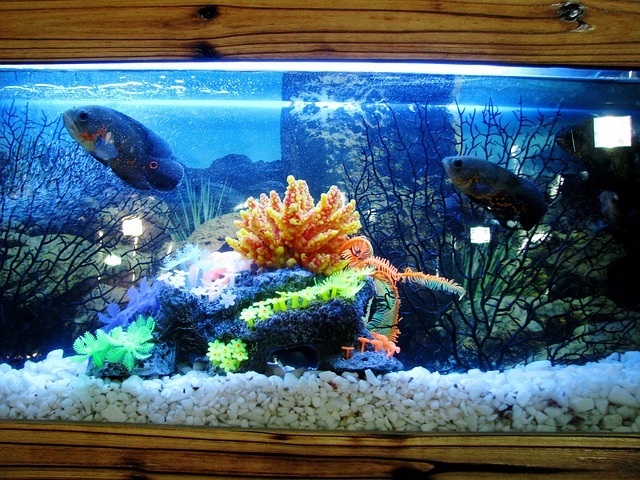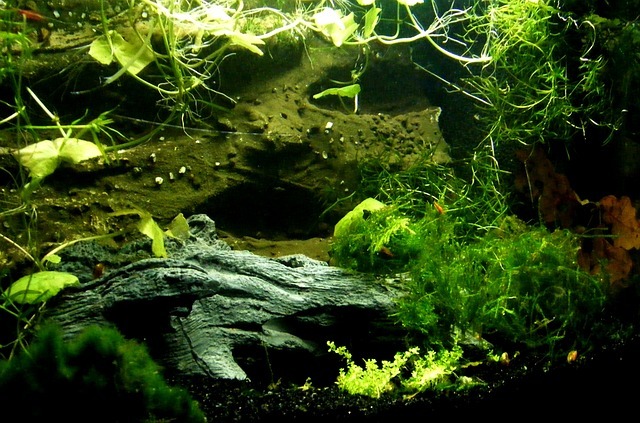If you have an aquarium with a biological filter, then you might have heard of this. But what is cycling a fish tank and why is it necessary?
Fish produce waste which can be harmful to any aquascaping you have done, and if unfiltered, can have negative effects on the little creatures themselves.
Purchasing a biological filter will turn their ammonia excretions into nitrite and any toxic levels of nitrite into reasonable levels of nitrate.
Nitrate is harmless for the most part, but if you don’t cycle the water in your tank, it can cause a lot of pain and discomfort to your fish – sometimes even death.
In addition to hurting the life inside your aquarium, nitrate can cause algae growth as well.
Contents
Three Ways for Cycling a Fish Tank
There are three types of cycling in a tank; fish-in, fishless, and silent.
- Fish-in cycling is a method where fish are gradually added to your aquarium over a few weeks’ time. You can accelerate the process by either adding water, gravel, or biological filter media from a healthy tank you have access to or by buying water additives with the right bacteria from a pet store.
- Fishless cycling is relatively new, but has become popular in recent years. Rather than using the fish to test the livability of your water, you add small amounts of ammonia to the water. The bacteria feeds on the ammonia and stimulates the cycling process.
- Silent cycling is considered an unusual method, but many advise that it is efficient. Rather than fish or chemical additives, those who silent cycle choose sturdy and fast growing plants to balance the bacteria, ammonia, nitrogen, and nitrite in the tank until the biological filter has matured enough.
How to Cycle An Aquarium
Fish-In Cycling:
- First, you will assemble your tank and add in all of the things you want inside it (except the fish). This may include air stones, air pump, plants, rocks, and whatever filtration system you decided to purchase.
- Secondly, you will introduce a small number of fish that are called “hardy fish,” whose bodies can handle the high levels of toxins that are in the water before your filter can catch up to their waste production. Some hardy fish you can find are Branded Gouramis, Cherry and Tiger Barbs, Guppies, Minnows, Pupfish, X-Ray Tetras, and Zebra Danios.
- Next, you should be sure to feed the fish sparingly, because fish that eat more produce more waste. This can cause levels of toxins to rise, and any leftover food will rot and do the same.
- Every few days after this, you will need to change about 10-25% of your water to ensure that the toxin levels don’t rise too high before the beneficial bacteria can grow to effectively combat it. If you have a saltwater tank, be sure to replace the appropriate amount of marine salt. Do not use chlorine water, as it will reset the cycling process by killing what good bacteria has already started to grow.
- Once you have established your cycling process, be sure to test the water with toxin monitor kits. Once the levels reach zero, it is safe to add more fish that aren’t considered hardy fish. You will want to do this gradually though, so as not to upset the balance once more. A few fish once a week, with more monitor tests seven days after their introduction, is the safest way to go about it. This whole process should take about six to eight weeks to complete.
Fishless Cycling:
- Just like with fish-in cycling, you will need to assemble your tank and include all of the non-fish items you want and/or need in your tank.
- Rather than introducing fish into the aquarium, you will handle the waste manually. This method requires a lot more patience, but is considered the more humane way as toxin levels aren’t being tested on any fish.
- Before you use toxin monitor kits to test the levels of the water, you will want to add the regular amount of fish flakes you would use to feed your fish into the tank. Wait for them to decay before testing.
- When you test, you will want to have a level of at least three parts per million of ammonia in your water. If it falls below 3ppm, just add more fish flakes and test again in three days.
- After a week, you will need to start testing for nitrites. Once the nitrites have been detected by a test, you’ll know the cycling has begun. (This is where patience comes in.)
- The final phase of fish-in cycling comes when your tests detect a sudden drop in nitrites and an increase in nitrates.
- When all of the appropriate levels are at zero, you may gradually add your fish into the aquarium.
Here’s a video showing an aquarium set-up with fishless cycling.
How to Speed Up the Cycling Process
As mentioned before, there are a few ways you can decrease your wait time. Sprinkling in certified aquarium salt to your freshwater tank can help reduce the toxicity of nitrite.
However, you will only want to use 0.4 ounces to one gallon of water and no more. Adding bacteria from an already mature tank is one way, as you don’t have to wait for the bacteria in your tank to grow from scratch; the new can just multiply.
You can get the bacteria from water, rocks, and plants of a different tank. One downside to this, however, is that you risk transferring more than just good bacteria to your tank.
Do you have your own tips on cycling a fish tank?




